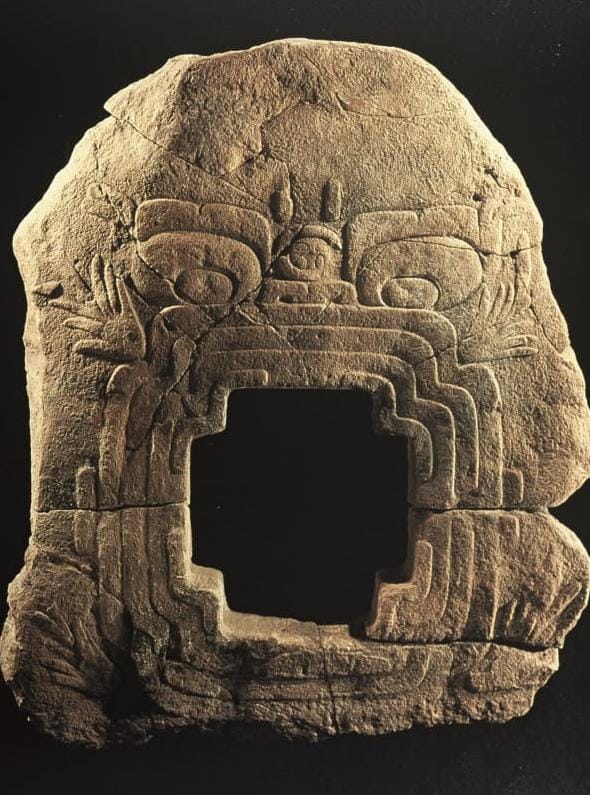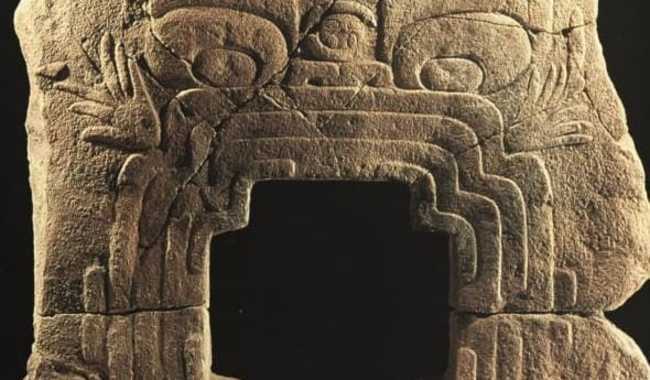- The piece is an Olmec bas-relief carving that measures 1.8 meters high and 1.5 meters wide and dates from the Middle Preclassic period (800-400 BC).
- It represents an "Earth monster" with iconographic features that associate it with other pieces from the Chalcatzingo Archaeological Zone.
As a result of the coordinated work done by the Mexican Ministries of Foreign Affairs and Culture and New York State authorities in the United States, Chalcatzingo Monument 9, an archaeological piece of great importance from the current state of Morelos, will be repatriated to Mexico.
The announcement was made by the Consul General of Mexico in New York, Jorge Islas, after the Manhattan District Attorney's Antiquities Trafficking Unit communicated that the important archeological monument had been recovered.
The Olmec carving will now return to Mexico. Its importance is comparable to that of the iconic colossal heads, since Chalcatzingo was the only settlement linked to that culture, which was founded and prospered in the Mesoamerican Central Highlands.
According to Mario Córdova, a researcher at the INAH Morelos Center and director of the Chalcatzingo Archaeological Project, Monument 9—a large-format piece measuring 1.8 meters in height and 1.5 meters in width and weighing approximately one ton – dates from the Middle Preclassic period (800-400 BC), the highpoint of the Chalcatzingo location.
The bas-relief sculpture represents an "Earth monster," a cosmogonic creature that appears frequently in Olmec iconography.
The open jaws of the piece symbolize a passageway to the underworld. "A sequence of three concentric bands is projected over its mouth, representing a cruciform passageway to a cavern," said Archeologist Córdova.
Another of its distinctive elements are four plant-like shapes that sprout from the corners of the mouth, which simulate bromeliad branches, a plant typical of the Chalcatzingo mountain which is also represented on Monuments 1, 2 and 13 of the archaeological site, which corroborates its origin.
“The name Chalcatzingo, which can be translated as 'little Chalco', was given to the area by migrants from the Basin of Mexico during the Postclassic period (900-1521 AD). Given the recurring presence of bromeliads in areas and monuments for Chalcatzingo's elite, we infer that the plant was a symbol identifying the original inhabitants of the city, since it is also a unique element in Olmec iconography in general,” added Córdova.
Although the date and manner in which Monument 9 was illegally removed from Chalcatzingo is unknown, its removal was disclosed in 1968 by archaeologist David Grove in issue 33 of American Antiquity magazine. It is believed to already have been in the U.S. by the beginning of the second half of the 20th century.
Archaeologist Mario Córdova welcomed the efforts of the legal teams of the INAH and Ministries of Culture and Foreign Affairs, with the support of US authorities, which have led to the recovery and upcoming repatriation of the sculpture.
"This monument is important for the research being done on Olmec iconography, which is why we have received this news with joy and enthusiasm," he said.
The Government of Mexico expresses its deepest appreciation to the U.S. authorities and, in particular, to the Manhattan District Attorney's Antiquities Trafficking Unit. The recovery of this piece is an example of how much can be achieved for the benefit of our societies through cooperation between countries.

